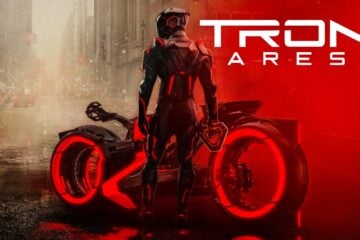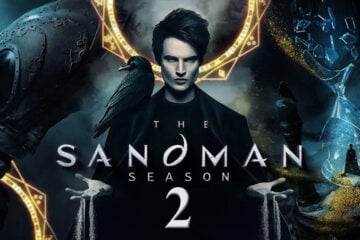Jason and the Argonauts and the Dragon of Ljubljana

The picturesque city of Ljubljana, with its emerald green river, Baroque architecture, and vibrant café culture, might at first seem far removed from the dusty shores of ancient Greece or the myth-laden adventures of its classical heroes. Yet one of the most enduring legends of Ljubljana’s origin connects it to one of the most iconic figures in Greek mythology: Jason, the leader of the Argonauts, and his fateful encounter with a dragon. This mythological tale, stitched together from Greek lore and local Slovenian folklore, gives Ljubljana one of the most unique origin stories of any European capital. At its center is the Ljubljana Dragon, a symbol so beloved that it adorns the city’s flag, bridge, and identity.
In this article, we explore how Jason and his Argonauts founded Ljubljana according to myth, the roots of the dragon legend, and how Greek mythology left a lasting imprint on the region’s cultural heritage.
The Journey of Jason and the Argonauts
To understand Ljubljana’s mythological foundations, we must begin far to the southeast, in Iolcus, a city in ancient Greece. There, a young hero named Jason was tasked with an impossible mission: to retrieve the Golden Fleece, a symbol of kingship and divine favor, from the distant land of Colchis (modern-day western Georgia). Jason assembled a group of heroes known as the Argonauts, named after their ship, the Argo. This band included the likes of Heracles, Orpheus, Atalanta, and Castor and Pollux—the crème de la crème of Greek heroic tradition.
Their journey took them across the Aegean Sea, through the Hellespont (modern Dardanelles), and into the Black Sea. After enduring a series of trials—including clashing rocks, harpies, and duplicitous kings—Jason ultimately secured the Golden Fleece with the help of Medea, a Colchian sorceress and princess, who fell in love with him and betrayed her father to assist him.
But Jason’s troubles did not end with the retrieval of the fleece. Fleeing from the vengeful King Aeëtes of Colchis, Jason and the Argonauts embarked on an erratic, winding route back to Greece—one that, according to later legends, took them up the Danube River and into Central Europe. And here, our story begins to intersect with the myth of Ljubljana.
The Argonauts on the Danube: A Forgotten Route
Greek mythology, while often tied to the sun-soaked Mediterranean, occasionally ventured inland into Europe’s mysterious forests and river valleys. One version of the Argonaut myth suggests that rather than returning the way they came, Jason and the Argonauts sailed up the Danube River—a geographical impossibility if taken literally, but metaphorically rich. From the Danube, they supposedly followed the Sava River, a tributary that flows through modern-day Slovenia, eventually reaching a marshy region near the Ljubljanica River.
It is here, in the Ljubljana Marshes, that the heroes are said to have encountered a great beast: the Ljubljana Dragon.
The Ljubljana Dragon: Greek Beast or Slavic Legend?
Today, the dragon is the most iconic symbol of Ljubljana. It graces the city’s coat of arms, its Dragon Bridge (Zmajski Most), and countless souvenirs. But unlike medieval dragons that hoard gold or torment maidens, Ljubljana’s dragon has a mythical Greek origin—at least according to legend.
As the story goes, Jason and the Argonauts stopped near the spring of the Ljubljanica River to rest. There, they encountered a monstrous dragon living in the swamp. This creature was terrorizing the surrounding lands, rendering them uninhabitable. Jason, being the hero he was, fought the dragon in a battle that would define the land’s destiny. After a fierce struggle, Jason slew the beast, clearing the way for civilization to take root in the region. This event is said to mark the mythical founding of Ljubljana.
The Symbolism of the Ljubljana Dragon
The dragon Jason fought is not merely a monster; it is a symbol of chaos, wilderness, and the unknown—an archetype found throughout global mythology. For Jason to kill it was to tame the land, impose order, and enable human settlement. In this context, Jason acts as a culture hero, someone who founds civilizations and overcomes nature’s dangers.
This idea parallels the Greek myth of Cadmus, who slew a dragon at the site of Thebes and sowed its teeth into the ground, from which armed warriors sprang. Like Cadmus, Jason’s confrontation with the dragon marks a point of transition between the wild and the civilized, myth and history.
Today, Ljubljana’s dragon continues to carry these meanings. It is a reminder of strength, protection, and rebirth. The Dragon Bridge, completed in 1901 and one of the first bridges in Europe made of reinforced concrete, uses the dragon motif to project modernity fused with tradition.
Other Greek Mythological Echoes in Slovenia
Though Jason and the dragon are the most prominent Greek elements in Ljubljana’s origin myth, there are subtle resonances of Greek mythology in the broader region. Slovenia, like much of Central Europe, absorbed a mosaic of cultural influences throughout the centuries—Roman, Slavic, Germanic—and through the Roman Empire, Greek mythology was transmitted.
During the Roman period, Ljubljana was known as Emona, a Roman settlement established in the 1st century AD. Though there is no archaeological evidence directly linking Jason to Emona, Roman settlers often brought with them the stories and gods of Greece, including Jupiter (Zeus), Mars (Ares), and Diana (Artemis), whose cults would have blended with local spiritual practices.
Additionally, local mythic creatures like water spirits, dragons, and serpentine guardians of springs or caves echo the imagery of the Hydra, Python, and other Greek monsters slain by heroes such as Heracles and Apollo.
It’s not difficult to imagine how these traditions mingled. As Greek stories were retold along trade routes, they would have been adapted to fit local geography and cosmology, leading to a hybridized version of Jason’s story taking root in the Ljubljana marshlands.
The Ljubljana Dragon’s Enduring Legacy
The legend of Jason and the Ljubljana Dragon is not merely a charming anecdote—it has become central to the city’s self-image. In tourism materials, educational programs, and cultural branding, the story is often recounted as a mythical prelude to the city’s history.
Statues of dragons, especially those on Dragon Bridge, are revered by locals and tourists alike. There’s even a tradition that if a virgin crosses the bridge, the dragons are said to wag their tails—a modern fairy-tale twist to an ancient myth.
Furthermore, the legend has inspired Slovenian writers, painters, and poets. The dragon has become a canvas for public art and a symbol of resistance, strength, and national identity. In a sense, Jason, a hero of another land and time, has become an honorary citizen of Ljubljana.
Conclusion: Jason’s Legacy in Central Europe
The tale of Jason and the Ljubljana Dragon is a vivid example of how mythology transcends borders, transforming and adapting over time to suit new lands and peoples. While Jason never set foot in Slovenia according to canonical Greek texts, the mythic resonance of his journey allowed later storytellers to integrate him into their own landscapes. Through this process, Greek mythology became part of Slovenian folklore, and Jason’s dragon-slaying exploits helped found a city.
In Ljubljana, myth and memory are intertwined. The ancient story of Jason’s heroism is etched into the city’s symbols and structures, reminding us that even in the heart of Central Europe, the legacy of Greece’s golden age continues to inspire and enchant.
Whether you view it as historical fantasy or cultural metaphor, the tale of Jason and the Ljubljana Dragon reveals something essential about myths: their power not just to explain the past, but to shape identity, imagination, and a sense of place.
Further Reading and Exploration:
- Visit Dragon Bridge (Zmajski Most) in Ljubljana for a firsthand look at the iconic dragon statues.
- Explore the Ljubljana City Museum for historical and mythological exhibits.
- Read Apollonius of Rhodes’ Argonautica for the classic version of Jason’s journey.
- Research Slavic dragon myths and compare them to Greek dragon-slaying tales for a broader understanding of cultural fusion.
Let the myth of Jason and the dragon guide your steps as you walk through the streets of Ljubljana—a city where ancient legend and modern life still meet.
Discover more from Hellenic Moon
Subscribe to get the latest posts sent to your email.


